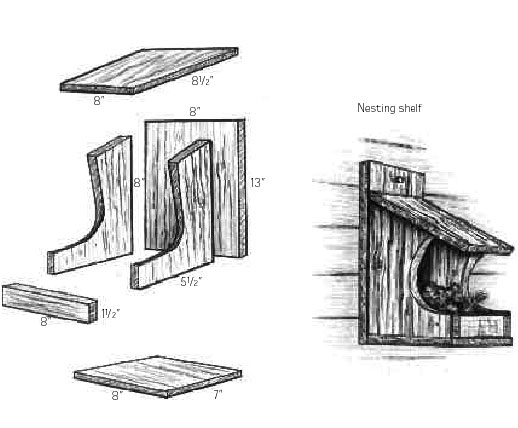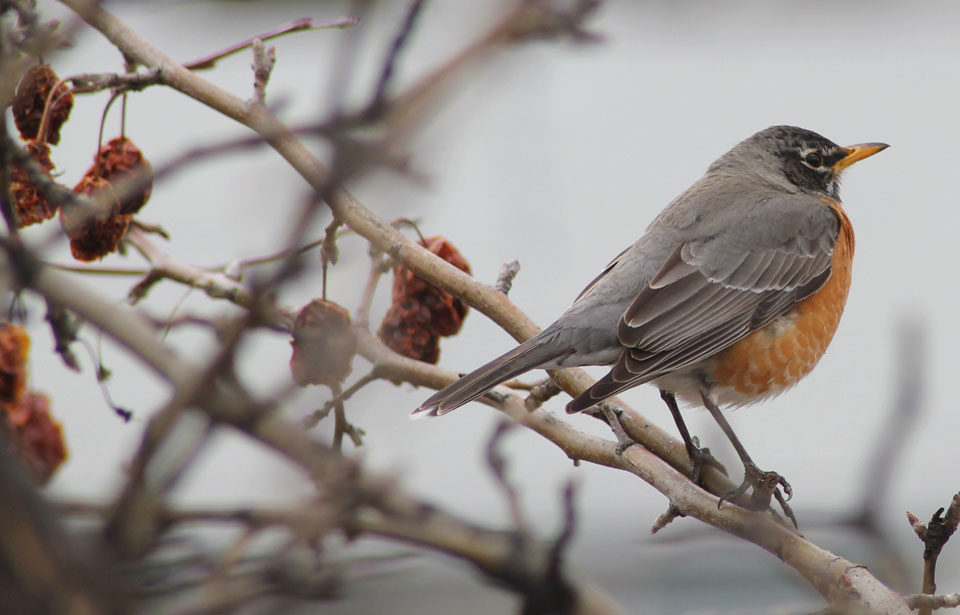Although some birds, like American robins, barn swallows, and eastern phoebes, won’t nest in boxes, they’ll gladly accept nesting shelves mounted on trees or tucked under the overhanging eaves of your home.
Procedure
- Use 2-cm (3/4”) untreated softwood or any wood that resists weathering. This structure can be made easily out of leftover lumber. Never use pressure-treated wood, as it can be toxic to nestlings.
- Follow the construction plan laid out below. Cut the roof, bottom, sides, back, and fence for the nesting shelf.
- Assemble the pieces according to the construction plan, using 4-cm (1.5”) coated flat-head screws. The structure will last longer if you also hold the pieces together with bond-fast glue.
- Either leave the nesting shelf unpainted or treat it with waterproof varnish. If you paint the structure, use subdued brown, tan, or grey, as these colours are more likely to attract birds.
- Mount the nesting shelf beneath the eaves of your house, preferably 4 or 5 m away from a doorway.
Maintenance
- Remove any nest as soon as the young are fledged. Robins build a new nest each year and often twice in a summer. Removing the first nest keeps adults from building another one on top of it.
- Robins and barn swallows need plenty of mud to build their nests. However, as summer progresses and some birds start to build their second nests, mud may be scarce. Here’s how you can help: Find a good spot at the edge of a flower or vegetable garden to establish a mud hole. Use a hole or carry water to the spot in a pail and pour it into the earth. Squish the soil with your hands, a stick, or a shovel until it reaches a muddy consistency. Try to find soil that is clayey. If there are small bits of grass or other plant fibres in the mud, that’s fine.
- Check on a regular basis that the nesting shelf is mounted securely and is in good shape.




